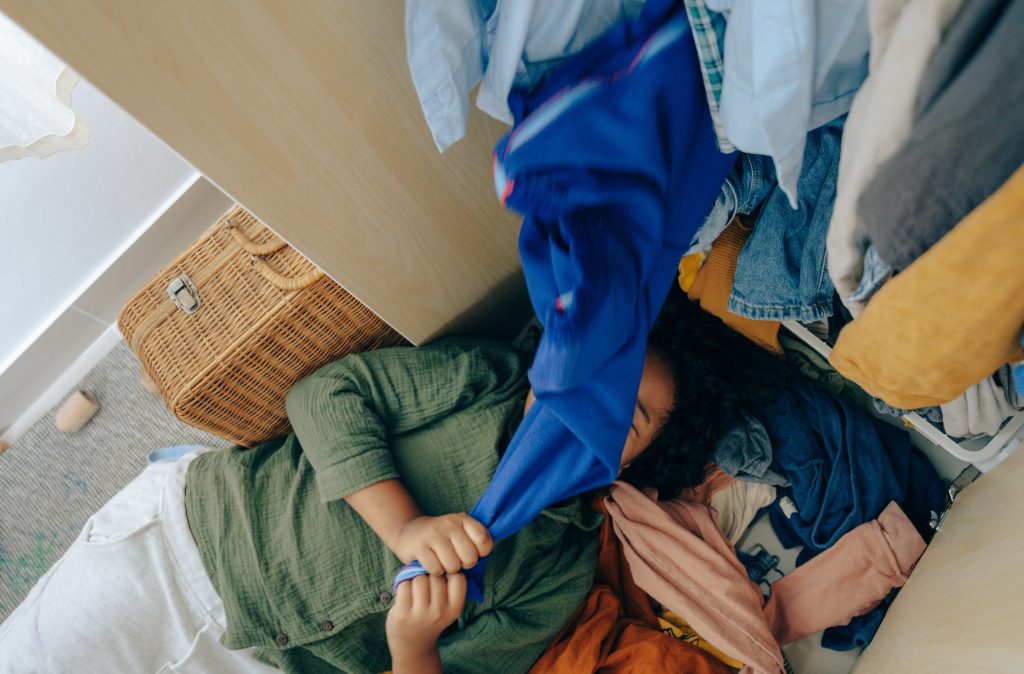As a parent, you want your child to look their best and feel confident in their clothing, but the cost of keeping up with the latest trends can add up quickly. Fortunately, there are ways to create a versatile wardrobe for your child without breaking the bank. With a little planning and creativity, you can build a wardrobe that will last through multiple seasons and stages of growth, all while staying within your budget.
Planning Your Wardrobe
Assessing Your Needs
Before you start shopping, it’s important to assess your child’s needs. Consider their age, the activities they participate in, and their personal style. For example, if your child is a toddler, you’ll need to focus on durable, easy-to-clean clothing that can withstand the wear and tear of playtime. If your child is in school, you’ll need to think about school uniforms and appropriate clothing for different seasons. And if your child is a teenager, you may need to consider their evolving sense of style and the need for clothing that can be dressed up or down.
Setting a Budget
Once you have an idea of your child’s needs, you can set a budget for their wardrobe. You can use a budgeting app or spreadsheet to track your expenses and ensure you don’t go over your set budget. Keep in mind that you’ll need to budget for both regular clothes and occasional items such as special occasion outfits or sports equipment.
Building a Versatile Wardrobe
Invest in Quality Basics
When building a versatile wardrobe, it’s important to invest in quality basics. These are items that can be worn in multiple ways and will last through multiple seasons. Some examples of basic clothing items include solid-colored t-shirts, jeans, and neutral-colored pants. Look for items made from durable fabrics, such as cotton or denim, which can withstand frequent washing and wear.
Mix and Match
One of the keys to a versatile wardrobe is the ability to mix and match different items. This means choosing clothing that can be paired with multiple other pieces in your child’s wardrobe. For example, a basic white t-shirt can be paired with jeans, skirts, or shorts, while a neutral-colored cardigan can be worn over a dress or with pants and a t-shirt. By creating multiple outfit options with a few key pieces, you can get more mileage out of your child’s wardrobe without having to constantly buy new items.
Add a Pop of Color
While basics are important, you also want to add a pop of color to your child’s wardrobe. This can be done with accessories, such as scarves, hats, or jewelry, or with statement pieces such as a colorful dress or a patterned shirt. These items can add interest to an outfit and make it more fun for your child to wear.
Shopping on a Budget
Shop for Deals
One of the best ways to save money on children’s clothing is to shop for deals. This can be done by keeping an eye out for sales at department stores or checking online retailers for discounts. You can also sign up for email newsletters from your favorite stores to be notified of upcoming sales.
Buy Secondhand
Another great way to save money on children’s clothing is to buy secondhand. You can find great deals on gently used clothing at consignment stores, thrift shops, and online marketplaces such as eBay or Facebook Marketplace. Keep
in mind that when buying secondhand, it’s important to check for any damage or wear on the items before purchasing. However, with a little bit of care and attention, you can often find high-quality clothing at a fraction of the cost of buying new.
Look for Multi-Purpose Clothing
When shopping on a budget, it’s important to look for clothing that can serve multiple purposes. For example, a dress that can be worn to a special occasion or dressed down for everyday wear, or a jacket that can be worn in the colder months and then used as a light layer in the spring. By choosing clothing that can be worn in multiple ways, you’ll be able to stretch your budget further.
Caring for Your Child’s Wardrobe
Wash and Care Instructions
One of the keys to making your child’s wardrobe last is to follow the manufacturer’s wash and care instructions. This means washing clothes in the correct water temperature and using the appropriate detergent. It’s also important to avoid using too much detergent, as this can cause buildup and damage to the fabric.
Repair and Alterations
Another important aspect of caring for your child’s wardrobe is to make repairs or alterations as needed. This can include things like patching holes in jeans, replacing missing buttons, or taking in a shirt that’s become too big. By taking care of these small issues, you can extend the life of your child’s clothing and save money in the long run.
Organizing and Storing Clothing
Finally, keeping your child’s wardrobe organized and stored properly can also help to extend its life. This means folding or hanging clothes in a way that prevents wrinkles and creases, and storing them in a cool, dry place. You can also use storage containers and bins to keep smaller items such as socks and underwear organized and easy to find.
Conclusion
In conclusion, creating a versatile wardrobe for your child on a budget is possible with a little planning, creativity, and care. By assessing your child’s needs, setting a budget, investing in quality basics, and shopping for deals, you can build a wardrobe that will last through multiple seasons and stages of growth. Additionally, by following the manufacturer’s wash and care instructions, making repairs and alterations, and keeping your child’s wardrobe organized and stored properly, you can extend the life of their clothing and save money in the long run.

